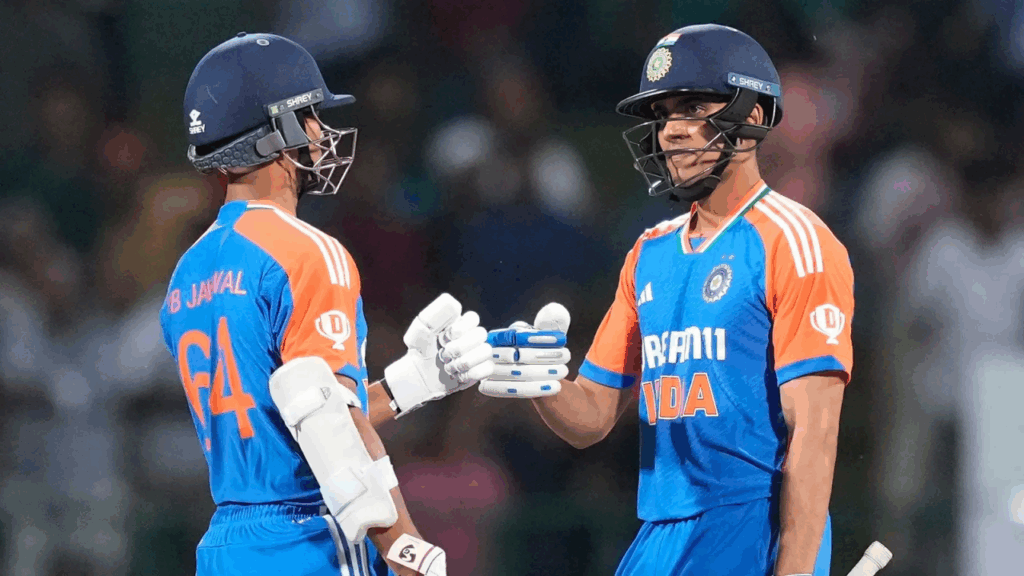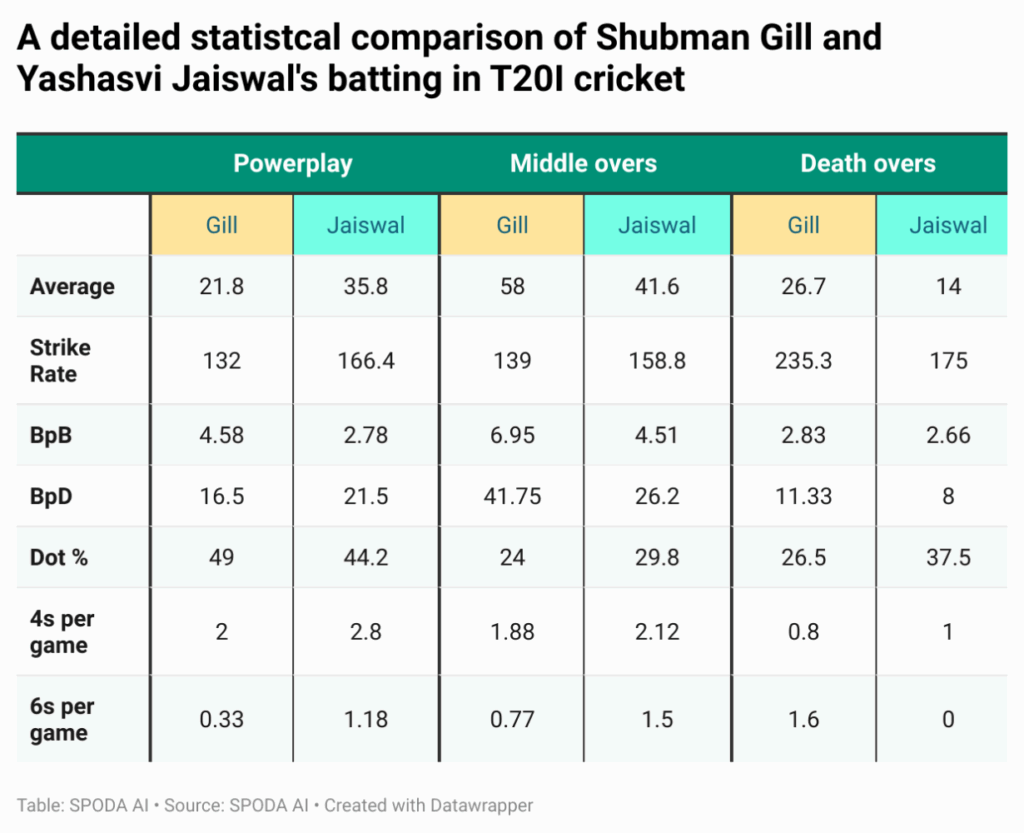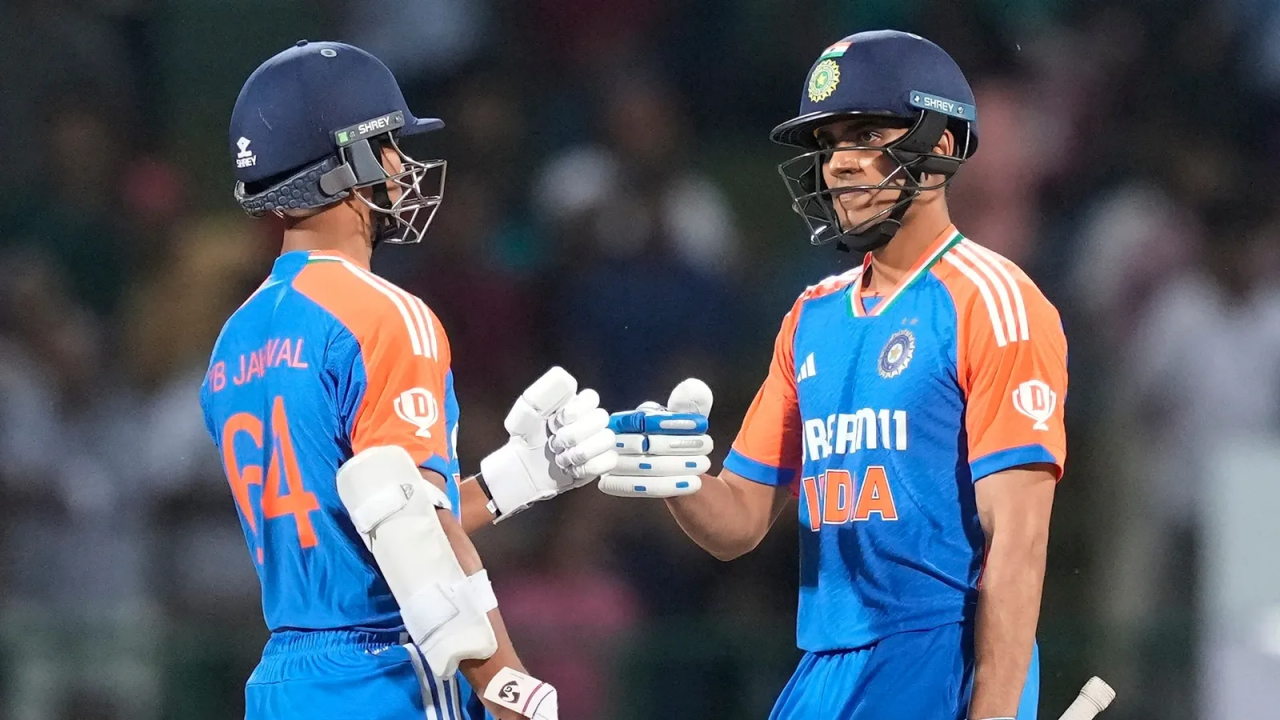Has Yashasvi Jaiswal been snubbed unfairly from India’s T20I setup?
The race for India’s T20I opening slot continues to be one of the most closely watched discussions in the current setup. While Abhishek Sharma has cemented his spot as the first opener, the second choice’s selection has sparked a debate. Both Shubman Gill and Yashasvi Jaiswal bring their own strengths to the top of the order, and their numbers reveal two contrasting approaches to the game.

A detailed statistical comparison across phases: Powerplay, Middle overs, and Death overs highlights how both batters adapt to different match situations. While Gill is known for timing and structure, Jaiswal relies on intent and fearless acceleration.

Powerplay: Jaiswal’s aggressive intent
In the first six overs, Yashasvi Jaiswal stands out with his fearless batting. He averages 35.8 at a strike rate of 166.4, showing that he loves taking on the bowlers early. His balls per boundary (BpB) ratio of 2.78 means he finds the ropes very frequently, and his dot ball percentage of 44.2% is lower than Gill’s, suggesting better rotation of strike.
He also averages 2.8 fours and 1.18 sixes per game in this phase, which highlights his ability to use the fielding restrictions to full advantage. Jaiswal’s approach sets the tone early, often giving his team the momentum in the Powerplay.
Shubman Gill, in comparison, plays more conservatively during this period. His average of 21.8 and strike rate of 132 show that he prefers to build a foundation. Gill’s boundary frequency (one every 4.58 balls) is notably lower, reflecting a risk-free approach. While his method gives stability, it sometimes results in slower starts when quick runs are needed.
Middle Overs: Gill’s control and consistency
Once the field spreads out, Gill’s numbers improve sharply. He averages a strong 58 with a strike rate of 139 in the middle overs. His ability to find singles and twos is reflected in his 24% dot ball rate, one of the lowest in this phase. Gill’s calm temperament helps him build partnerships and anchor the innings, making him a dependable option when early wickets fall.
Jaiswal, on the other hand, continues to attack even in the middle overs. His strike rate of 158.8 remains impressive, though his average of 41.6 suggests a greater willingness to take risks. He hits a boundary every 4.51 balls, showing that his aggressive intent doesn’t fade after the Powerplay. This approach can keep pressure on the opposition but also increases the chance of dismissal when attacking quality spin or pace in the middle, but the modern game has evolved and shown that the intent needs to remain intact, irrespective of the phase.
Death Overs: Signs of potential but not the key criterion
Neither of the two is a designated finisher, but Gill’s strike rate of 235.3 in the death overs shows he can accelerate when he bats deep. His average of 26.7 in this phase is a bonus for a top-order batter. Jaiswal’s lower numbers here are mainly because he rarely bats deep into the final overs, given his aggressive starts at the top.
The bigger picture
When comparing both, Jaiswal’s attacking Powerplay numbers make him a match-winner in short bursts. He can exploit early fielding restrictions and put bowlers under pressure from the very first over. However, Gill’s strength lies in his ability to play longer innings, guide run chases, and bat deep into the middle overs, a skill that remains crucial in T20 cricket, especially on slower pitches.
India’s team management has recently leaned towards Shubman Gill, valuing his reliability and structure at the top. Yet, Yashasvi Jaiswal’s fearless strokeplay and boundary-hitting ability continue to make him an exciting option particularly in the modern era of T20 cricket, and Jaiswal’s numbers align more with ablities to accelerate and take more risks.
Conclusion
As of now, Gill holds the edge in the race for the opening slot. While Gill stands out with better death over numbers and middle overs average, Jaiswal’s Powerplay impact and attacking mindset through both the phases- should rightfully be given more weightage. With both players still young and improving, India’s T20I future at the top looks secure- blending stability with fearlessness.

Leave a Reply